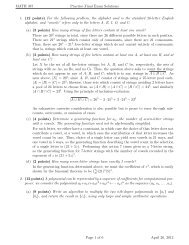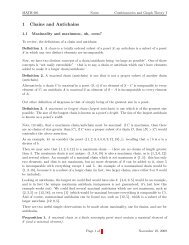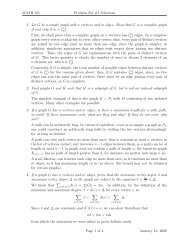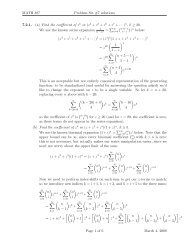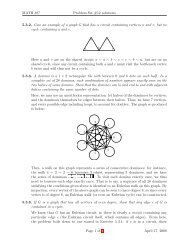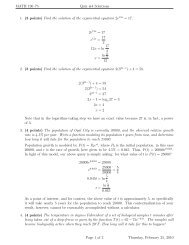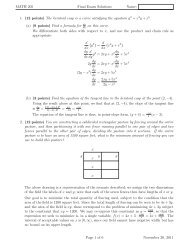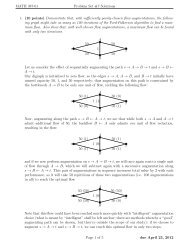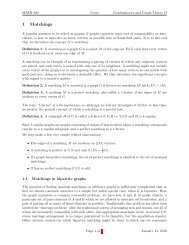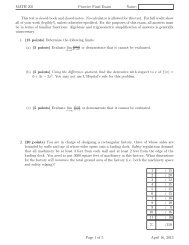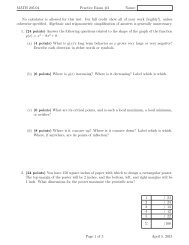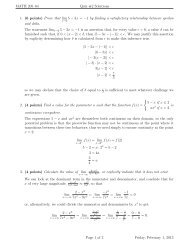MATH 205-03 Exam #3 Name: No calculator is allowed for this test ...
MATH 205-03 Exam #3 Name: No calculator is allowed for this test ...
MATH 205-03 Exam #3 Name: No calculator is allowed for this test ...
Create successful ePaper yourself
Turn your PDF publications into a flip-book with our unique Google optimized e-Paper software.
<strong>MATH</strong> <strong>205</strong>-<strong>03</strong> <strong>Exam</strong> <strong>#3</strong><br />
3. (18 points) Answer the following questions:<br />
(a) (5 points) Determine a region whose area <strong>is</strong> lim<br />
n∑<br />
n→∞ i=1<br />
your answer as a definite integral, or as a description in words.<br />
( 5<br />
n<br />
)<br />
arctan(2+<br />
5i). You may express<br />
n<br />
(b) (7 points) Find f(x) given that f ′ (x) = 16x 3 − 3x 2 and f(1) = 4.<br />
(c) (8 points) Find the general antiderivative of h(t) = 6√ t + 5 t − 2 + 4 csc2 t − 5<br />
1+t 2 .<br />
4. (12 points) Answer the following questions about approximation:<br />
(a) (6 points) Starting with an initial value of 1, use two iterations of Newton’s method<br />
to approximate a zero of f(x) = x 6 − 5x + 3. Your answer need not be arithmetically<br />
simplified.<br />
(b) (6 points) Choose x 1 = 4 to be an initial approximation of √ 17. Use one step of<br />
Newton’s method on an appropriately chosen polynomial function to develop x 2 , a better<br />
rational approximation of √ 17; also give an arithmetic expression (which need not<br />
be simplified) <strong>for</strong> the better approximation x 3 ar<strong>is</strong>ing from a second step of Newton’s<br />
method.<br />
Page 2 of 3 April 13, 2012




